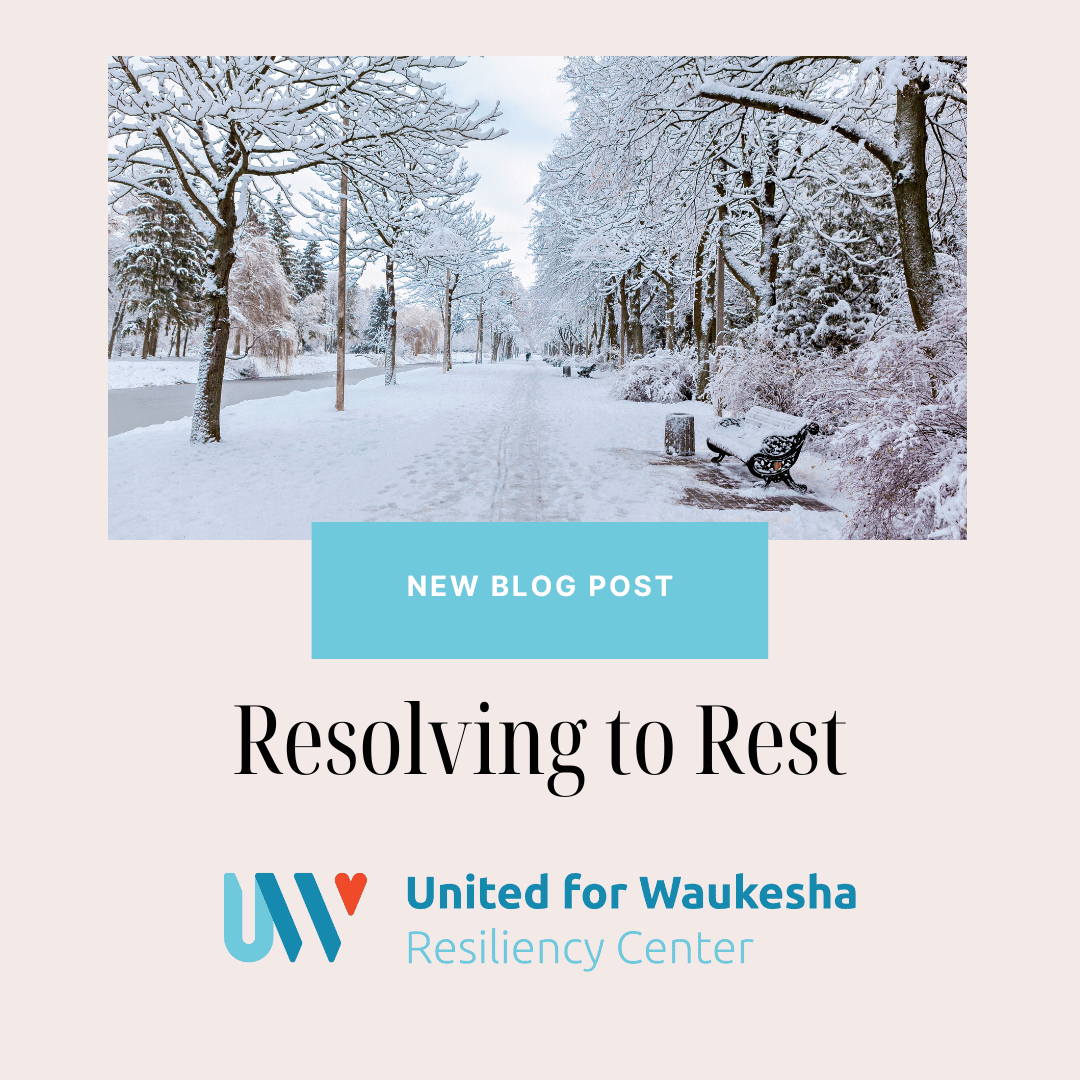Taking care of your mental health in the new year
Happy New Year! Whether your holiday season was busy with travel and gatherings or a time to rest and recharge, a new year brings a natural opportunity to reflect on change and the passing of time. Many people use the new year as a time to start fresh and make resolutions for self-improvement. It’s tempting to try to make sweeping changes. But holding ourselves to unrealistic standards can also be a recipe for guilt, stress, and lowered self-esteem. How can we move into the new year with space for growth, but also room for rest and self-compassion?
Here in Wisconsin, we might be able to learn from other cultures that have dealt with long, dark winters for generations. Danish culture promotes the concept of “hygge,” a mindful, intentional coziness. Residents of small towns in far northern Norway embrace the activities that can only be enjoyed in winter, like skiing and sledding. Within these practices, I find elements of radical acceptance, a skill promoted in Dialectical Behavioral Therapy. The skill of radical acceptance asks us to acknowledge what we can’t change and observe our current emotions without judgment or resistance. We can apply some of this to winter as well. It’s winter in Wisconsin, it’s going to be cold, the daylight is going to be short, and we’re going to have to deal with snow and ice and wind. We can’t change those realities – but we can influence how we approach them.
Radical acceptance does not mean approval of a situation, nor does it mean that we’ll never feel any discomfort or emotional pain. It does not encourage toxic positivity. It is closer to neutrality and acknowledgement: This is how it is right now, and this is how I feel about it. It keeps emotional pain from turning into ongoing suffering. Resisting the reality of winter by wishing it was somehow different will only compound our struggle.
So this January, the Resiliency Center encourages you to match nature’s rhythm. If it suits you, give in a little to the impulse to hibernate, slow down, and rest. Do like the Scandinavians do and find ways to cultivate mindful coziness in your day to day life, whether that’s an extra cup of hot chocolate, keeping up holiday lights a little longer, or appreciating the stark beauty of a winter snowscape. These should be activities you genuinely find pleasure in, and should not feel like another chore on your to-do list. And if nothing else, as we wait for spring, consider this: “Be patient with yourself – nothing in nature blooms all year.”
***
If the winter blues are consistent for you and start to get in the way of your daily activities, you might be experiencing Seasonal Affective Disorder (SAD), also known as seasonal depression. The tips listed above can still be helpful coping tools for SAD. Light therapy is another method that can be effective. It is best to talk to a medical or mental health professional if you think you might have Seasonal Affective Disorder, as it is a real form of depression that affects many.

